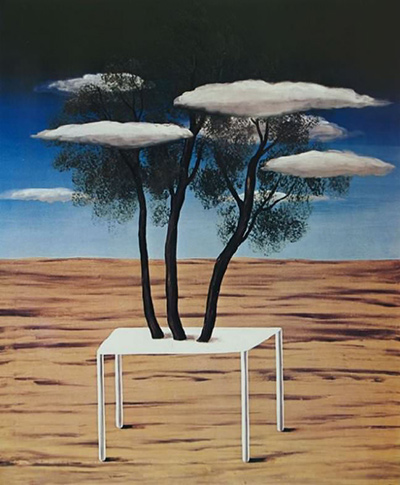Painted relatively early on in Magritte's career, in 1925, Oasis is a compelling work. A classic example of Surrealism it demonstrates Magritte's trademark ability to use detailed and realistic depictions of recognisable and everyday objects and then to make those objects seem surreal by juxtaposing them in odd ways.
Born in 1898, Magritte is rightly regarded as one of the key figures in the Surrealist movement: his name is frequently coupled with that of his contemporary, the Catalan painter Salvador Dali. And with good reason. As even a cursory glance at the mystical art work known as Oasis will demonstrate, this is a painter to whom Surrealism came naturally.
Oasis depicts a desert landscape, created with precision and skill using oil paints (oil on canvas was, overwhelmingly, Magritte's medium of choice throughout his career). A plain white table is placed in the centre of the desert and a few flourishing trees grow from the table top. Mingled in with the tops of the trees, we can see fluffy white clouds.
Everything about this painting is surreal: the fact that there is a table in the desert and the fact that there are trees growing from the table are key examples of the Surrealist method of juxtaposing ordinary objects and forms to make them seem extra ordinary. Even the placement of the clouds - mingles in with the tops of the trees - is surreal. This is a simple, almost textbook example of the surrealist genre of painting in the twentieth century.
Clouds are a theme that Magritte kept returning to throughout his career. In 1929 and again in 1937, Magritte painted two versions of a painting entitled 'On The Threshold of Liberty'. Fluffy white clouds in a blue sky are, again a key feature of this later art work as well - though in On The Threshold of Liberty the clouds are threatened by a canon that points at them and seems ready to shatter the peace and tranquility of the sky.




